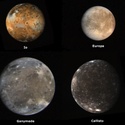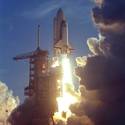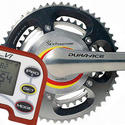Have you ever wondered what it would be like to work in the space sector? It goes way beyond astronauts and rockets and it’s growing fast! The Hub has teamed up with the Ministry of Business, Innovation and Employment to showcase some of the amazing mahi taking place in Aotearoa1 New Zealand. We’ve designed our resources to appeal to a younger audience and we’ve travelled the length of the motu to meet some of the people who work in the space sector.
Tātai arorangi
Space has always played a significant role in Aotearoa – its beginnings go back a very long way. Space itself has a whakapapa, beginning with Te Kore – our cosmological origins. Tātai arorangi enabled Māori to navigate the Pacific and develop maramataka specific to Aotearoa. The Society of Māori Astronomy Research and Traditions is revitalising this celestial knowledge.
Aotearoa in space
Mark Rocket and Peter Beck are two pioneers of New Zealand’s space sector. Mark played a key role – alongside Peter – in the early days of Rocket Lab (formed in 2006). The company was set up with a vision to “make space more accessible”. Rocket Lab directed the world’s attention to Kiwi space ingenuity and today’s innovators are keeping it there!
Kaitiakitanga2 embodies care and guardianship for our natural world, including ātea (space). The space industry in Aotearoa is young but kaitiakitanga is at the core of projects like Tāwhaki Joint Venture. Space debris is a wicked problem3 – satellites provide valuable services but can become dangerous junk. Fortunately, New Zealand has innovative research programmes working to track debris and minimise danger.
MethaneSAT is the first government-funded space mission in Aotearoa. The satellite4 is able to measure methane emissions from anywhere on Earth and track them back to their origins. This is important because methane is a greenhouse gas. Identifying and fixing methane5 leaks from oil and gas operations can cut emissions by up to 45%. New Zealand has dual roles in the programme. The Mission Operations Control Centre is located in Auckland where engineers will drive the satellite and keep it functioning smoothly. Kiwi scientists are using their decades of expertise6 to lead a global agricultural methane detection programme.
Clear skies and innovative thinking
New Zealand’s clear skies, both figuratively and literally, make the country an ideal location for the space sector. Rocket launches are not constrained by lots of sea and air traffic. Innovative companies like Kea Aerospace and Dawn Aerospace are at the cutting edge of ingenuity and sustainability. Both companies are taking advantage of uncluttered skies to test remotely piloted vehicles. Researchers from around the world take advantage of our atmospherically clear skies to calibrate satellite sensors and validate global space-based observation missions.
Innovative thinking is also behind a space research lab named LUCY that is so tiny it can fit in your hand. LUCY sits inside a very small satellite called a CubeSat and is testing the technology that may one day help us grow food on Mars!
Remote sensing and Earth observation
Remote sensing is another key element of our space industry. Earth observation satellites make precise measurements on a regular basis. Discover how satellite imagery is helping to track and monitor albatross to inform our conservation7 efforts. GeoNet uses GPS sensors to monitor geohazards such as slowly moving land changes that precede earthquakes. Xerra Earth Observation Institute uses satellite radar8 data9 to monitor the seas for illegal fishing and dark vessels – boats that turn off location-transmitting devices to avoid being detected.
So what’s in an Earth observation satellite? What keeps it powered, on track, safe from danger and enables it to collect data? Find out for yourself with the Build a satellite interactive and activity! The interactive has three scenarios and lets you build a satellite for a particular purpose. Watch as Rocket Lab’s Electron rocket takes your satellite into orbit10. If your build is successful, you can collect and analyse real-life data about albatross populations, slow slips and dark vessels. Students can even create a 3D cardboard model of their purpose-built satellite.
Take up the challenge
Our activities support multiple curriculum areas: science, social sciences, technology and digital technology.
Kaitiakitanga is a core component of our space industry, so having a clear set of guidelines and rules about using space above the motu is very important. Explore the issues by creating a space treaty. Knowing these guidelines will come in handy for those working in the space sector. Can I work in the space industry? introduces students to the attitudes and dispositions of those working in the sector and encourages students to consider how they can take on the challenge of working in space.
We get some amazing images from space that contain a wealth of information. Interpreting observations from satellite images uses fantastic photos of Aotearoa to help young people learn a few of the strategies that real scientists use to interpret representations. Of course, scientists need to make sure that the data provided by satellites is accurate. Challenge students to make on-the-ground observations to validate online satellite views of your school.
Another way to gather and interpret data is with micro:bit sensors – they can be easily incorporated when investigating or modelling space-related projects. Micro:bits also feature when students make a model of a CubeSat – a small satellite of just 10 cm3 – and use it to detect light.
Move from hands-on technology to digital technology and create a game that cleans up space junk. We have two examples made in Scratch: Space Debris Remover and Space Junk Deorbit that provide both fun and inspiration.
Navigating through all of this may be a challenge so, to make it easier, check out the context for learning. It contains curriculum connections and pedagogical suggestions for getting the most out of the resources.
Related content
Need some help getting your head around all the different resources? Our recorded webinar highlights key themes.
The Hub has lots of space-related resources curated in the satellites, astronomy and rockets topics.
The following collections have been created by the Hub team and are ready to use and customise as you want:
There are a lot of resources on Aotearoa in space so we created these collections of resources with a more narrow, targeted focus:
Log in to make one or more of these collections part of your private collection, just click on the copy icon. You can then add additional content and notes and make other changes. Find out more about using our super handy collections tool.
Useful link
Visit the New Zealand Space Agency – the front door for space activity in New Zealand.
Acknowledgement
This resource has been produced with funding from the Ministry of Business, Innovation and Employment and the support of the New Zealand Space Agency.
- Aotearoa: The Māori name for New Zealand, meaning Land of the Long White Cloud.
- kaitiakitanga: A Māori term that encompasses ideas about care and guardianship of the sea, sky and land – the environment. Kaitiaki refers to those who carry out kaitiakitanga such as tangata whenua (people of the land).
- wicked problem: Complex problems that are extremely difficult to solve because of the many different aspects that interact. They often involve environmental, economic or political issues or a combination.
- satellite: Any object that orbits around another object.
- methane: CH4, a gas that contributes to the greenhouse effect.
- expertise: Having excellent knowledge or skills in a particular area.
- conservation: The protection, preservation and careful management of a species, habitat, artifact or taonga.
- radar: A method of detecting distant objects and determining their position, speed, or other characteristics by using very high frequency radio waves reflected from the objects’ surfaces.
- data: The unprocessed information we analyse to gain knowledge.
- orbit: The path of an object as it revolves around another object. For example, the path the Moon takes as it moves around the Earth is its orbit.






